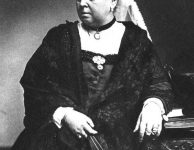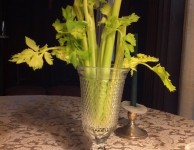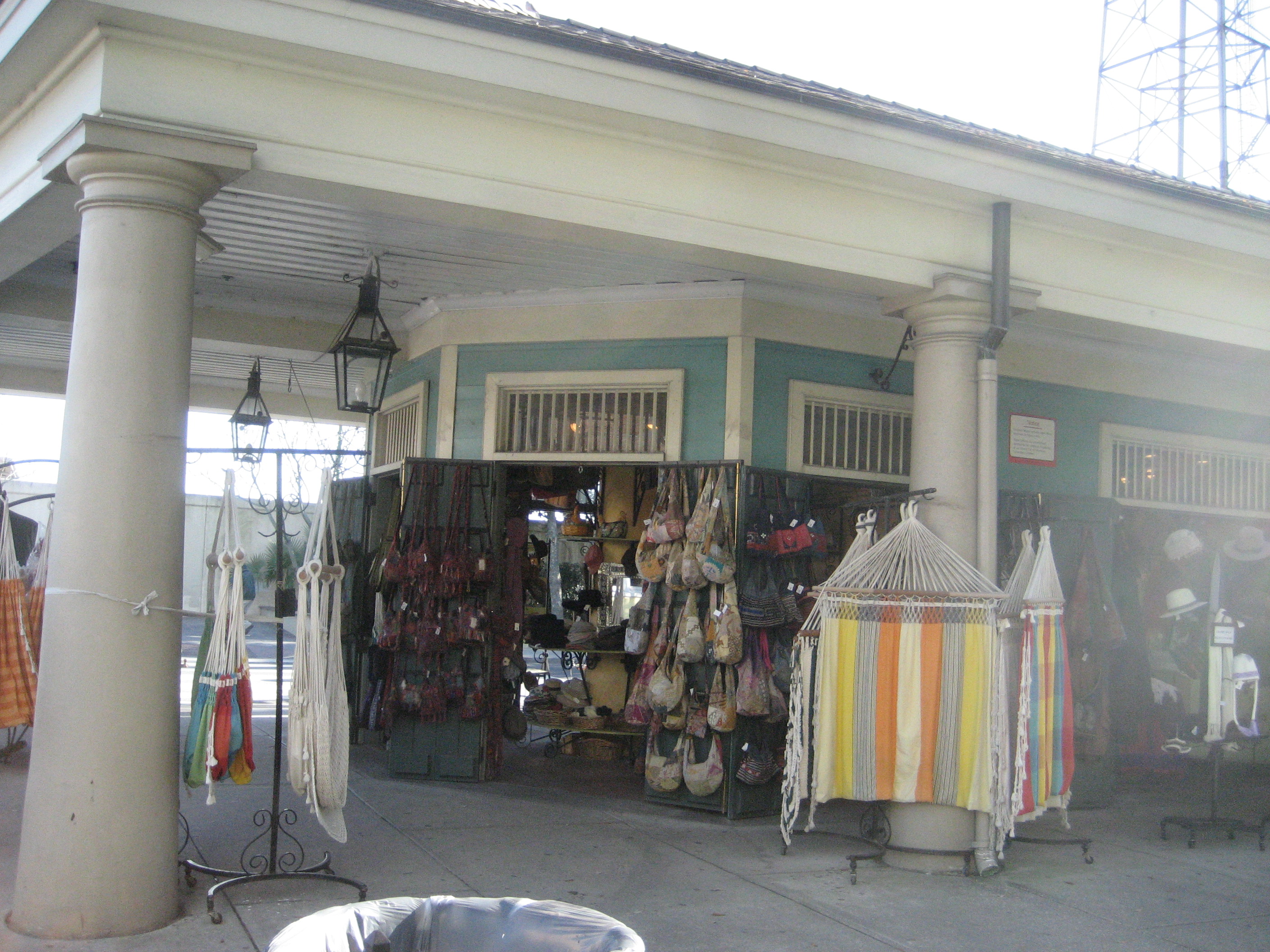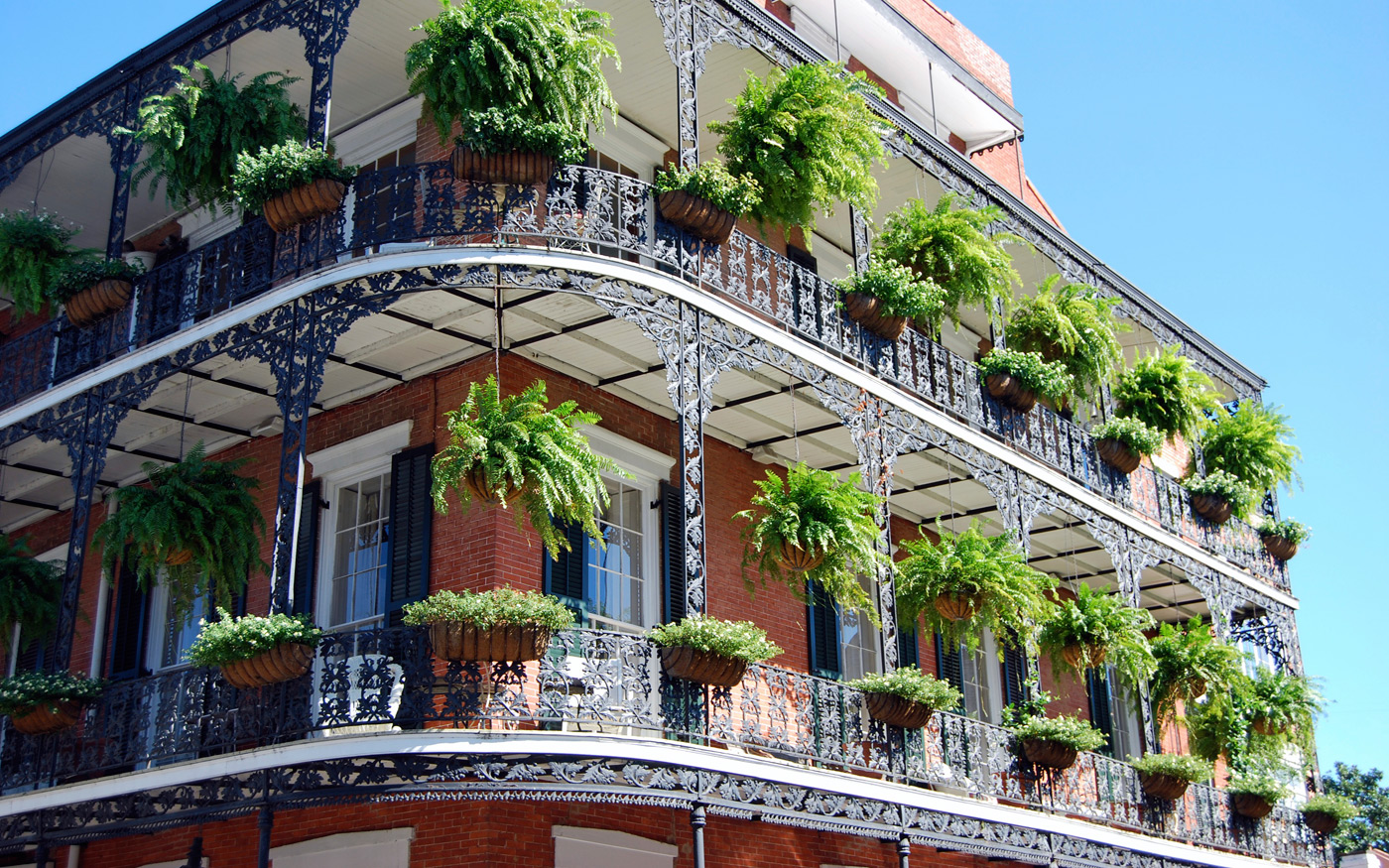Hope in a Jar: Victorian Ladies Made Themselves Up
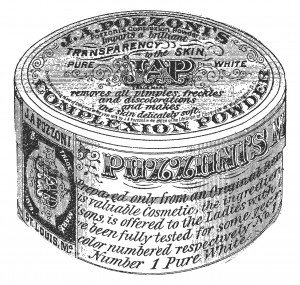
Pozzoni’s face powder
It’s no secret Cleopatra wore green eye shadow and blackened her brows and eyelashes with kohl, a mix of lead, copper, ash and burnt almonds. The Greeks and Romans favored white lead paint on their faces with rouge of crushed mulberries.
In England in the 1700s, the fashionable outdid themselves with powdered wigs, powdered faces, dark eyebrows, beauty marks and rouge. False eyebrows made of mouse fur glued to the face were acceptable artifice, especially because the lead in face paint caused hair loss. Even in the Regency period when the Napoleonic wars halted cosmetic imports from France, English ladies still managed to turn their cheeks rosy with rouge.
Leave it to Queen Victoria to slam the door in the face of makeup. Believing painted faces were for actors, actresses and prostitutes, the queen pronounced cosmetics vulgar in the 1850s. Beauty treatises advised fine ladies in England and America to just pinch their cheeks and bite their lips to enhance their facial features.
Despite the imperial decree, fashion ruled the day, as always. The standards of beauty favored pale skin. Ladies stayed out of the sun. When they ventured outdoors, they wore long-sleeved dresses, gloves and hats and carried parasols to shade them further.
Nothing was too unpleasant or dangerous if it achieved the desired result. To lighten their skin, women drank vinegar and lemon juice; some even took arsenic to attain a fragile look. To brighten their eyes, they dropped lemon and orange juice in them. To dilate them, they used poisonous belladonna.
Beeswax, far less harmful, had many functions. To darken eyelashes, ladies applied beeswax, followed by a dusting of soot. Beeswax served as a gloss for lips as well. To this, a lady could add red dyes made from crushed flowers or the crushed bodies of the cochineal insect. The dyes made from the cochineal proved so effective that to this day, these crushed insects are an ingredient in some lipsticks, face powders, rouges and blushes.
Hairdressers or pharmacists often concocted face powders and rouges, which they sold discreetly to customers. This being the era of patent medicines, some of these claimed health benefits, which made them more acceptable. One of the most famous American complexion powders was JAP, trademarked by Joseph A. Pozzoni in 1874.
On its wooden box, were the words: “Pozzoni’s Complexion Powder imparts a brilliant transparency to the skin, removes all pimples, freckles and discoloration and makes the skin delicately soft.”
Then, as now, women hoped such claims were true. Before the century ended, every family owned at least one mirror. That, plus the desire to look their best in family photographs, hugely popular at the time, led many women to use cosmetics to enhance their beauty. They were willing to pay just about anything to feel they were at their best. Has anything changed?

